Planting roses in the fall: when and how to properly plant seedlings in open ground
The rose is the most beautiful creation of all flowers. It is not in vain that she is called the queen of the garden, because she is endowed with a bright and catchy beauty that leaves an indelible mark on the soul.
However, before planting this wonderful flower in their garden, gardeners ask themselves whether it is possible to plant roses in the country in the fall, how to carry out the procedure correctly, what are the features and rules of autumn planting. All answers are below!
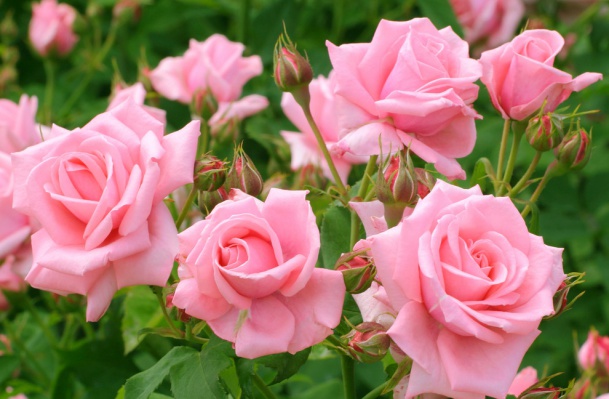
Content
When to plant roses in autumn, in what month: optimal timing
Many gardeners, especially beginners, are wondering if it is possible to plant roses in the fall. The answer is clear: autumn is the ideal time to plant roses. For this event, both temperature and humidity are suitable, in other words, the general condition of the soil substrate.
Concerning specific dates when it is better to plant roses in autumn, then most often start planting seedlings in September and ends in mid-October (relevant for the Middle Lane).
In any case, it all depends on where you live and the characteristics of the climate, namely, when your first frosts begin.
As a rule, it is recommended to plant roses in autumn 20-30 days before the first frost. During this time, the young seedling will have time to root well, additionally grow roots and prepare for wintering. And you must not forget to prepare the roses for winter yourself, namely cover properly.
The ideal temperature for rooting is +10 .. + 15 degrees, while the night temperature should not drop below +5. It is under such conditions that the root system actively grows, and the buds remain dormant.
And here later planting of roses in autumn (late October-early November) is undesirable even for seedlings with a closed root system (in containers), since in this case the plant may simply not have time to take root in a new place and freeze out in winter.
However, some gardeners successfully plant roses at a later date, as in the next video.
Video: late planting of roses in October
The same goes for landing too early. late summer (August), in this case, the plant can have time to start growing and the first frosts will also destroy the young seedling.

Advantages and disadvantages of planting in the fall
It is difficult enough to say when it is better to plant roses - in spring or autumn, and opinions differ. Some believe that it is necessary to plant seedlings only in spring, while others, for example, are sure that the best time is autumn.
By the way! The site has a separate article about when and how to plant roses in spring.
It is important to note that roses planted in spring require more careful care: after planting, the seedlings must be shaded from the sun, carefully monitor the soil moisture (especially in summer, in the heat).
The advantage of planting roses in autumn is the fact that during the fall the root system of the plant manages to take root well in a new place, therefore, in the spring, both the aboveground and root parts of the plant develop more evenly, as a result, the bushes form quickly enough and begin to bloom.
The exception is climbing roses, which bloom on biennial stems.
How to plant roses in autumn: step by step instructions
Naturally, first of all, you need to choose a good seedling, properly prepare a place for planting it and actually plant the purchased seedling in open ground in the fall according to all the rules and recommendations that will be given below.
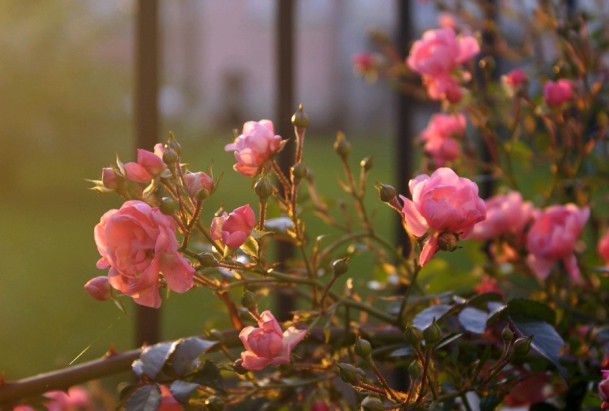
What should be a seedling and how to prepare it for planting in open ground
Rose seedlings for planting in the fall are recommended to be bought in specialized stores, nurseries or at exhibitions. Only there you can get all the information about a particular variety and you can be sure that this information is true.
Advice! When choosing roses, you should already at home, having rummaged on the Internet, decide on their group or type (hybrid tea, Floribunda, climbing) and specific varieties, based on their characteristics (color, size, height, disease resistance).
Rose seedlings can be sold as open-rooted, i.e. with an open root system (OCS) and in containers (with a closed root system - ZKS).
If planting is planned in the near future, then it is best to purchase specimens with an open root system (they are cheaper). But container seedlings are more expensive, but at the same time they can be stored and their survival rate, as a rule, is almost 100%.
Good open-rooted rose seedling should look like this:
- The roots are evenly developed in all directions, brown in color, without strange spots like rot.
- The seedling itself has at least 3-4 well-developed main shoots. They should be a rich green color with a glossy shade, as well as sharp thorns, without unusual cracks or unnecessary growths.
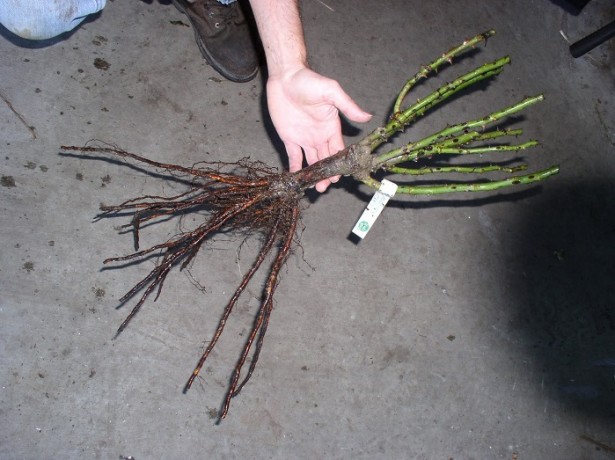
If a rose seedling is in a container with soil (that is, with a closed root system), then it should also be examined externally (if there are leaves on the plant, they should be rich green, healthy in appearance and without any spots on the leaf surface) and be sure to check that it grows in a pot, and was not planted there by an unscrupulous seller a week ago (it is quite simple to do this: just grab the seedling and pull, if it pulls out easily - the conclusion is obvious).
Preparing for landing
If a container seedling (with ZKS) definitely does not need to be cooked somehow (although there is a recommendation that it is better to slightly loosen the earthen lump with your hands so that the roots can penetrate the new soil faster and easier), then seedlings with open roots before planting in the ground should be correct prepare.
To prepare seedlings of roses with an open root system for planting, you need to do the following:
- Carefully inspect and cut off any broken and weak tops of the shoots (branches).
- Remove all leaves.
- Shorten the roots to 30-40 cm. If they have already been cut off, then the sections must be updated (refreshed) and checked that the cut is necessarily white.
Rotten root tips must be cut off to a living area.
- If you see that the roots are dry and lethargic, then a day before planting, they should be placed in water (and preferably cold).
For better survival, immediately before planting, the roots can be dipped in a clay mash (made of clay and water or with the addition of fresh mullein, heteroauxin or potassium humate).

Landing place
What place to choose in the garden to create a rose garden?
- It is quite obvious that the future queen of the garden should be placed there, where it will be best seen, for example, next to a house or garden paths.
- Roses are very light-loving plants, to be grow well, bloom profusely and be fragrant only in open and sunny areas (recommended 5-6 hours of direct sunlight per day).
- Interesting! Some gardeners believe that the best place to plant roses is where the sun will illuminate the rose garden from dawn to dusk. Of course, finding such a place in the garden is difficult enough, but in any case, you need to choose the most illuminated area.
- However, it should be understoodthat roses should not be in direct sunlight all day long (especially if you are a resident of the southern region), because in such conditions they will fade faster, their petals will burn, the color of the flowers will fade, in other words, the roses will lose all their decorative effect ... Therefore, you should choose places where at noon (in the very heat) there will be at least a slight shade.
Important! If roses are planted in partial shade, then they will reach for the light (they will be stretched out), bloom little and hurt a lot. And in the shadows, and at all - to slowly die ...
An exception make up roses of delicate colors that look faded in the bright sun, as well as quickly fading varieties (for example, almost all varieties of English roses) in order to maintain a rich color.
Worth knowing! The amount of light also affects disease resistance. In addition, sunlight is an important deterrent to the growth and development of fungal diseases.
- In this case, the selected area should be well ventilated and at the same time be well protected from cold, drying winter northerly winds, due to which the rose can suffer greatly from dehydration. So, for example, it will be great if on the north side the rose garden is covered by the wall of the house or by a dense planting (hedge) of decorative shrubs and / or trees.
By the way! Climbing roses are planted near arches, columns, gazebos, fences, near walls and trellises, which they will further entwine.
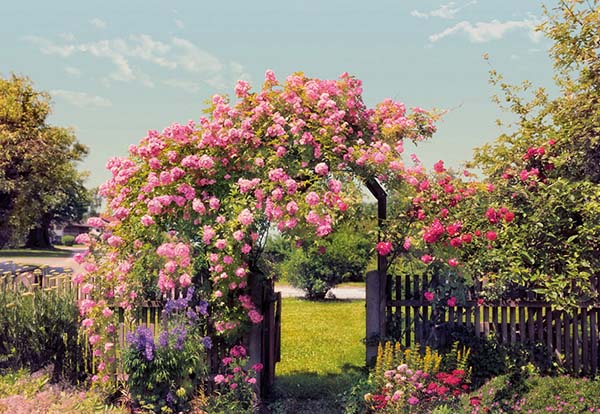
In other words, the place for roses should be open, but not on the north side, where cold winds will dry them (roses) in winter.
- As for the height of the site, then, of course, it is best to plant roses in higher places, which do not cool so much, and besides, moisture does not stagnate in them.
The fact is that in lowlands the air is always colder, and moist soils are cooled even more.
- the Rose does not like excessive abundance of moisture and wet soils... In such conditions the root system of the plant begins to rot due to lack of oxygen and the plant dies.
High ground waters are especially dangerous for roses.
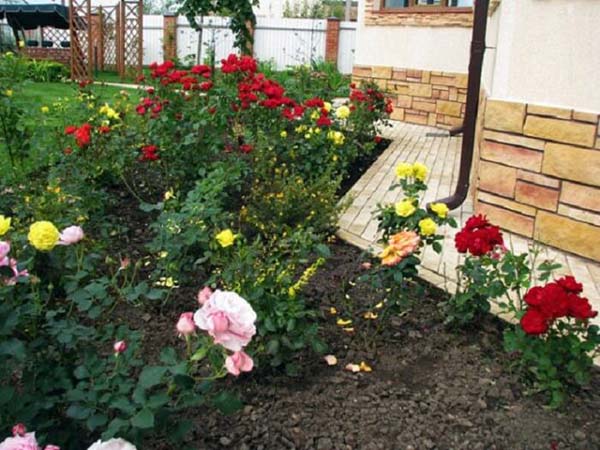
Advice! If you want to make a composition of roses, then it is quite obvious that undersized varieties need to be placed in the foreground of the rose garden (on the south side), and higher ones (the same climbing ones) on the second, that is, behind them. In this case, the sun will be enough for everyone.
Optimal distance between bushes
As for the distance between seedlings, it is varies depending on the type of rose (but in any case, the queen of the garden loves free space to grow):
- So, hybrid tea roses, polyanthus roses, and Floribunda are planted at a distance of about 30-60 centimeters from each other;
- Border (miniature and patio roses) - 25-30 cm (they are usually planted in a trench);
- Semi-climbing and park - 75-100 cm (you can even up to 1.5 meters);
- Climbing roses are planted at least 90-100 cm from each other (preferably 1-1.5 meters).
Note! Thickening of plantings leads to the development of fungal diseases, moreover, it makes it difficult to care for roses, especially pruning and loosening.
Planting is very rarely also impractical, because it should be convenient for you to care for the bushes, including tying shoots, bending down and covering the bushes for the winter.
Advice! It is best to plant roses in a rose garden in 2-3 rows in a checkerboard pattern.
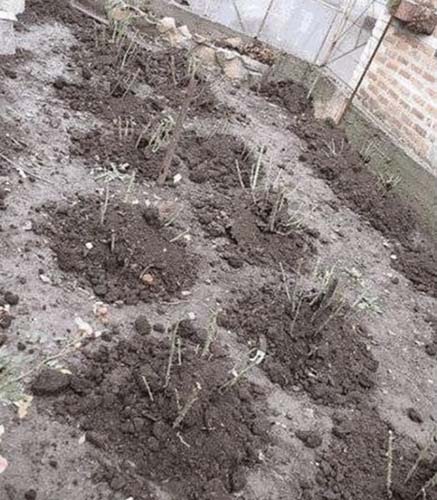
What kind of soil is neededwhat to fertilize before planting
Of course, it is preferable to plant roses in fertile soil... The soil itself should be rather loose, but also moderately clayey, while being able to pass air and moisture well.
As you know, roses love to grow on clay soils, good moisture retention and thus preventing the plant from drying out. In other words, overly light sandy soils that cannot hold moisture and dry out quickly are not suitable for the plant.
So, as you already understood, it is very important for roses soil balance.
Thus, if you have initially poor (sandy) and very heavy (clay) soil, then you can always improve its structure and nutritional value yourself, making good drainage and contributing enough organics (to retain moisture) and nutrients.
If the soil is too heavy, then sand, sawdust, a little peat and / or compost should be added to it, wood ash... If the soil is sandy - more compost, peat, sod land, even clay. In other words, organic matter is required for any soil.
Concerning soil aciditythen ideal for roses pH 6 to 7, i.e. neutral soil.
Worth knowing! Acidity affects the availability of nutrients in the soil, and if the pH decreases (the soil becomes acidic) or rises (alkalizes), then some elements simply begin to not be absorbed by the plant.
To increase acidity (lower pH), you need to add sulfur, ferrous sulfate, and sour peat to the soil.
To lower (raise the pH) - dolomite flour, wood ash, lime.
Naturally chosen for planting roses the site is not prepared before the very procedure for planting seedlings, but in advance, at least a few weeks (preferably a month). So, the soil in the chosen place should be dug onto a shovel bayonet (about 25 cm), adding the necessary improvers to it.
Preparation of holes (planting holes)
A planting hole for roses is prepared with a depth of 45-60 cm (if you have heavy clay soil, it is better to dig deeper - 60-70 cm) and the same width (diameter) - 50-60 cm. It is these hole sizes that are ideal for a rose with roots 30-40 cm long (i.e. + 15-20 cm).
The depth of the hole should be just such that the roots do not bend.

After the hole is dug, the top fertile layer (the first 20-25 cm) is poured into it, which is mixed with soil improvers and loosening agents (sand, humus, peat, etc.).
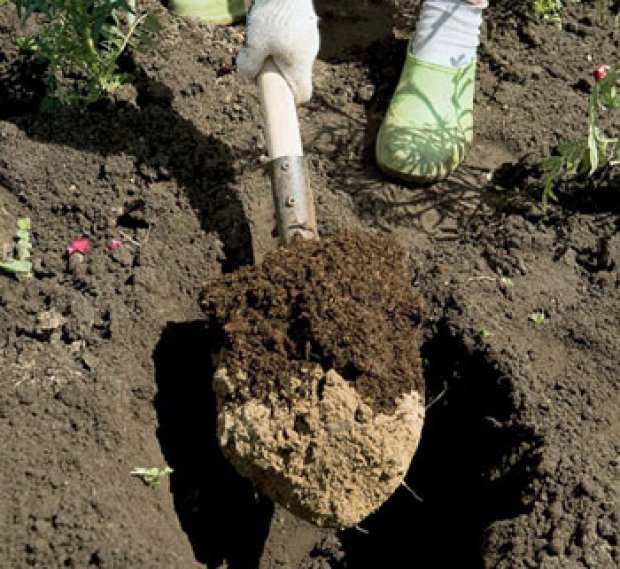
Direct landing
Put the prepared mixture into the pit and compact. Then you need to make a depression for the size of the roots.
In autumn, roses are planted a little deeper than they grew in the nursery to protect them from early autumn frosts. Climbing roses are deepened 7 cm to form additional roots.
Step-by-step instructions for planting roses in autumn in open ground:
- A layer of prepared soil mixture is poured onto the bottom and compacted (15-20 cm).
- Then they make a small mound.
- A seedling is installed on top of it, in which the roots are evenly distributed and spread on a mound on different sides.
Important! In no case should the roots bend upwards.
- Then, holding the seedling itself with one hand, the roots are gradually covered with the remaining fertile soil with the other, carefully compacting it with your hands and at the end trampling (tamping) with your feet.
Note! It is very important to properly bury the seedling so that it the grafting site (root collar) was below the soil level at a depth of 3-5 cm.
An exception: climbing roses deepen a little more - by 8-10 cm.
And standard roses are planted at an angle of 30 degrees so that the stem does not break when bending down during shelter for the winter.
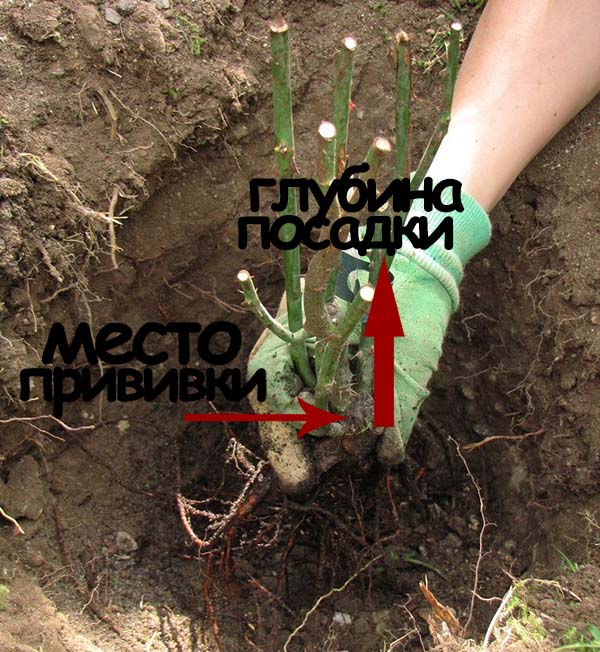
- Further, the seedling is watered abundantly so that the earth evenly fills all the voids, while allowing the water to be absorbed, i.e. pour in portions (in total, you will need about 1-2 buckets of water).
- After the water is absorbed, check the position of the inoculation site.
If the soil has settled excessively, then the seedling should be raised slightly and add the prepared potting mixture.
- At the end, the soil is mulched, for example, with humus, hay or dry soil (so that a dry earth crust does not form).
- And when the frost begins, the roses are sure to spud and cover for the winter.
Advice! Pruning during autumn planting is done in spring so as not to provoke shoot growth.
Video: how to plant roses in autumn with an open root system
Further care for roses after autumn planting
After you plant your roses, caring for young plants is very simple. As a rule, watering is no longer required, as the weather is humid during the fall. However, if the autumn is very dry, then it will be necessary to water (if there is a drought, then every 3-5 days).
And the most important thing is properly prepare roses for winter, namely insulate them - spud and / or cover.
In the future, caring for roses in the garden will include the following main activities:
- regular watering;
- spring care after winter;
About all the nuances of caring for roses in spring after winter written here.
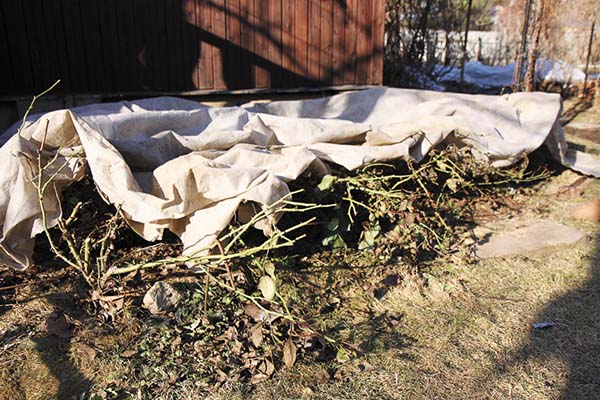
- top dressing (but not in the near future, of course, if you well filled the planting pit with organic matter);
Note! The site already has a detailed articleabout feeding roses in spring and summer for lush bloom and in the fall.
- pruning in the spring;
Advice! About, how to prune roses in spring, told in this article.
- treatment against diseases and pests;
By the way! For example, about how to deal with aphids on roses, you can learn from of this material.
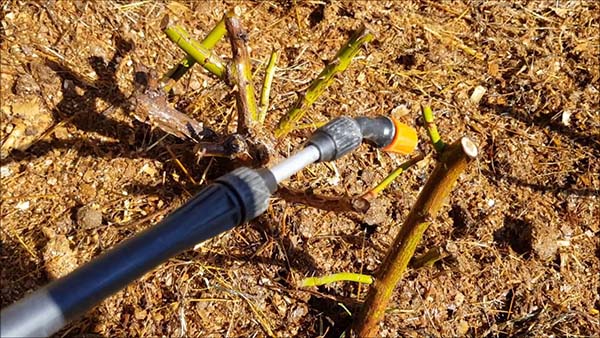
- preparing roses for winter - autumn pruning and shelter.
Important! About the general preparation of roses for winter and their shelter you can read here, in more detail and specifically about autumn pruning of roses told in this article, a about sheltering roses for the winter read in this material.
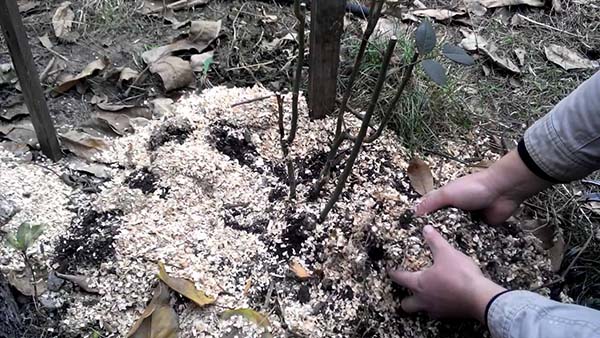
- In the future, you may need plant (divide) or simply transplant roses to a new place.
About it (about the transfer) You can find out from this article.
- Propagate by cuttings.
The site also has material about how to propagate roses by cuttings in autumn.
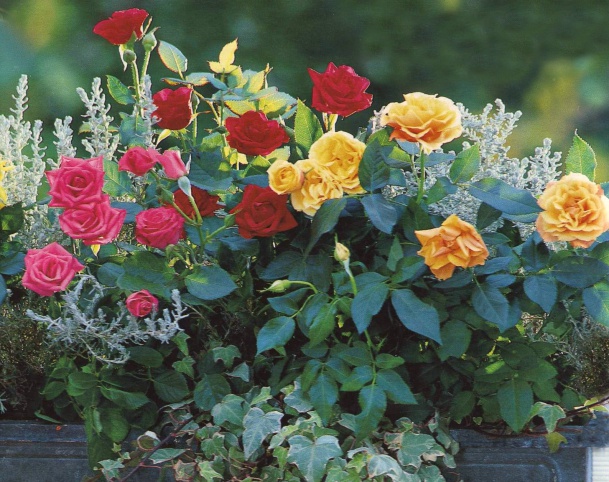
Thus, now you know when and how to plant roses in the fall, so that you can enjoy their first bloom next year. It's not so difficult to make a beautiful rose garden on the site!
Video: planting and pruning roses in autumn - brief and clear (no water)

